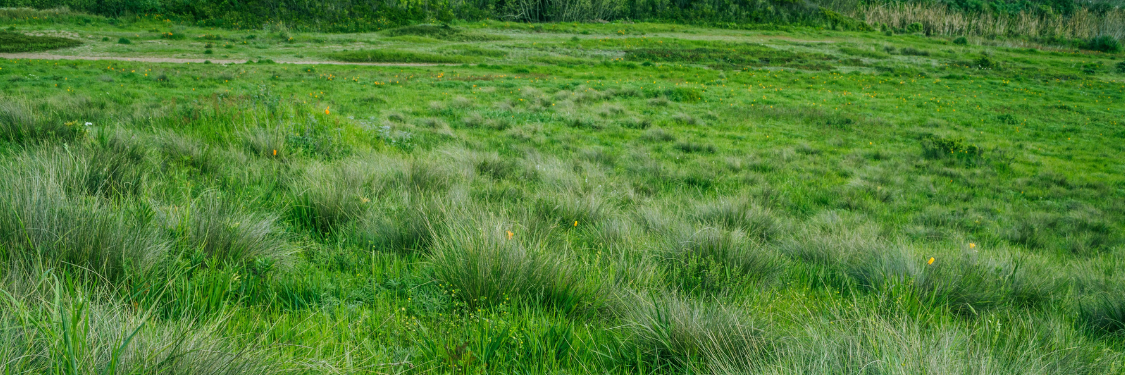A Featured Interview with Daniela Ibarra-Howell & Erik Bruun Bindslev
Grasslands cover nearly one-third of the Earth’s surface. When these landscapes are mismanaged—often due to inadequate management and livestock grazing practices—it can lead to land degradation with far-reaching consequences for people, wildlife, and the environment. The Savory Institute has spent more than a decade advancing Holistic Management, a comprehensive management framework that fosters regeneration of grasslands around the globe. Yet, as the urgency of ecological collapse and biodiversity loss accelerates, the Savory Institute team recognized the need for something more to aid this effort: an investment-ready platform that could aggregate large-scale capital and deploy it effectively into high-integrity regenerative land projects.
The Savory Foundation was founded in 2022 to bridge this gap—bringing together large-scale institutional capital, philanthropic funders, and regenerative land stewards to implement projects at the scale the planet urgently requires. Now, the Foundation is unveiling their first fundable project in Uruguay to regenerate grasslands at scale, while involving local farm stewards and solving for some of the system’s key obstacles for scaled investment in regeneration.
At the helm of the Savory Foundation is Daniela Ibarra-Howell, who serves as Chair and Managing Partner of the Savory Foundation and co-founder/CEO of the Savory Institute. A native Argentinian, her background combines expertise in agricultural engineering, natural resource management, and economics with hands-on experience managing her family’s 9,000-acre ranch in Colorado, USA for over a decade. A key architect of Savory’s strategy, she has been instrumental in scaling its impact through a network strategy and market-driven initiatives in food and fashion. Backed by Savory’s proven track record and the deep community ties of its global network, the Foundation is poised to leverage capital for large-scale grassland restoration.
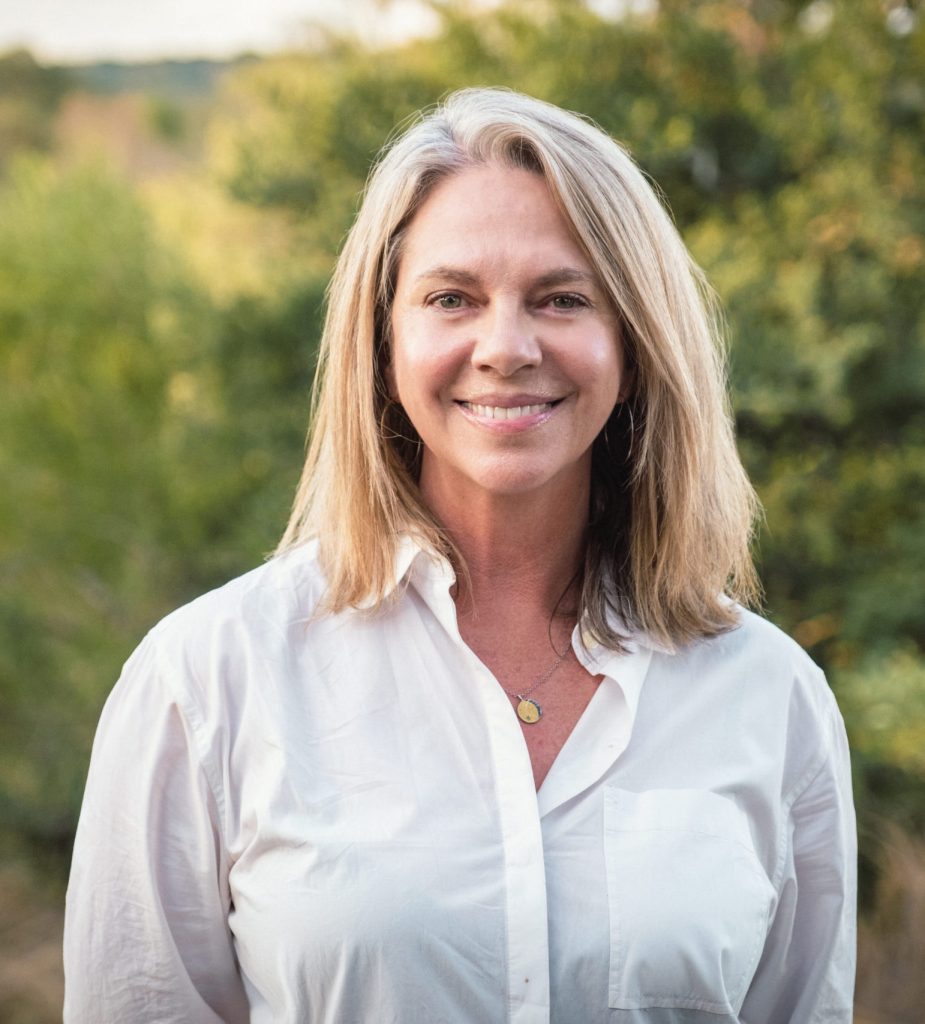
Regenerative Food Systems Investment (RFSI) had the opportunity to speak with Daniela and the Savory Foundation’s Head of Strategic Partnerships, Erik Bruun Bindslev, about this exciting work. The two shared about the foundation’s mission to bring capital to scaled regeneration, what makes this first project so unique, challenging, and rich with potential, their long-term vision for Savory Foundation, and why investors and funders should pay attention.
Here’s what they shared…
Scaling Regeneration for Global Impact
RFSI: Please start by telling us about Savory Foundation and why it came to be?
Daniela: Savory Foundation was created in response to the accelerating disintegration of ecological systems due to management — leading to climate instability and social turmoil. Biodiversity loss, ecosystem collapse, and declining resilience are interwoven crises; when one system fails, the others follow. As the world awakens to this reality, we have a historic opportunity to intervene at scale through the door of regenerative agriculture on the vast grasslands where the potential for regeneration is immense.
The Savory Institute laid the groundwork for this transformation through decades of leadership in Holistic Management, a global network of implementation partners known as Savory Hubs, and a scientifically rigorous monitoring framework. Yet, the urgency and scale of today’s crises demand a new level of investment and coordination. This is where Savory Foundation (SF) comes in — founded in 2022 as an Erhversdrivende Fond (Commercial Foundation) in Denmark, SF is a strategic vehicle designed to attract and structure significant funding into regenerative livestock agriculture at scale.
RFSI: What is unique about Savory Foundation’s approach?
Daniela: SF’s mission is to unlock and deploy mission-aligned capital, into large scale regenerative agriculture in grasslands worldwide, ensuring that investments in this nature-based solution are transparent, measurable, and capable of delivering lasting ecological and financial returns. By leveraging our global network of Savory Hubs, we ensure funds flow directly into projects that restore ecosystem function, strengthen rural communities, and drive systemic change. Our focus is on scaling regenerative impact, ensuring that investors and philanthropic partners can deploy capital effectively to meet climate and biodiversity commitments, while achieving strong risk-adjusted returns.
Pilot Project in Uruguay
RFSI: Please tell us a little about Savory Foundation’s first investable project.
Daniela: The Uruguay Grasslands Regeneration Project aims to restore and enhance Uruguay’s grasslands through holistic management and improved grazing practices. The initiative addresses ecosystem degradation caused by suboptimal land and livestock management. Using holistic planned grazing and ecological monitoring feedback loops, the project optimizes livestock movement and pasture recovery to improve vegetation cover, soil health, and carbon sequestration. The project also mitigates risks of land-use changes, such as conversion of grasslands to eucalyptus and pine plantations, which threaten biodiversity and soil stability.
The project area spans fourteen departments in Uruguay, covering 140,000 hectares. It includes 125 individual landowners (individuals or family-owned entities). These lands are located within the Uruguayan savanna ecoregion, which is characterized by native grasslands dominated by perennial grasses and forbs.
It supports medium-scale family-owned ranches, providing producers with new revenue streams through carbon credit sales, as well as training and consultation support to improve ecological health and increase their ranches’ productivity and resiliency.
RFSI: There is also opportunity for investors and funders to participate here. What is the funding opportunity?
Erik: Backed by Savory Institute’s history of successful regenerative impact, this project presents an attractive opportunity for investors seeking to deploy capital into high-integrity nature-based solutions. With strong due diligence, a structured carbon finance model, and a growing market for premium carbon credits, it offers:
- De-risked early-stage financing through philanthropic and catalytic capital
- Revenue generation via carbon credit sales
- Opportunities for blended finance models, integrating debt and equity structures
- Long-term alignment with biodiversity and sustainability goals
- Social impact on farmer livelihoods and local communities
RFSI: Ok, there’s a lot to dig into with both the project and the investment opportunity! Let’s talk about how this project achieves all of this.
Beyond Carbon: A Holistic Approach to Regeneration
RFSI: You mentioned carbon credits for producers – what role do carbon credits play in this project?
Daniela: Carbon credits serve as the financial conduit that channels capital into large-scale regenerative projects, aligning environmental impact with investor returns. As rapidly maturing ecosystem service markets, they provide a scalable way to fund climate and biodiversity solutions.
The project is being developed under the VM32 Methodology for Improved Grasslands Management and aims to obtain certification under Verra’s VCS standards, ensuring high environmental and social integrity, with an estimated 5.6 million tCO2e sequestered over 20 years.
However, carbon sequestration is just one facet of a broader ecological strategy. By restoring grasslands, the project also enhances biodiversity, improves water retention, and increases soil health—positioning it as a high-value investment within the expanding natural capital market. As these markets continue to evolve, they offer a compelling opportunity for investors to align financial performance with tangible climate and ecosystem benefits.
RFSI: How do you build outcomes beyond carbon?
Daniela: While this project is designed for the carbon markets, it is not defined by them. At its core, this initiative is about restoring balance—both in the land and in the lives of those who steward it. Ecological resilience alone is not enough. The project also seeks to strengthen the social fabric by supporting sustainable livelihoods and wellbeing. The introduction of carbon credit revenue streams provides producers with an additional, much-needed source of income while simultaneously enhancing land productivity. This dual benefit ensures that conservation is not at odds with economic stability but rather works in tandem with it.
Education and empowerment are fundamental pillars of this vision. Through targeted training programs, land stewards gain the knowledge and skills needed to engage with regenerative practices effectively. This includes not just technical training but also the cultivation of local ecological literacy. By equipping them with the tools to make informed, adaptive decisions, the project fosters a new generation of land managers who see themselves as both beneficiaries and caretakers of their landscapes and key contributors to climate change mitigation.
Ultimately, this initiative is not just about measuring carbon—it’s about designing a future where ecological and human well-being are deeply intertwined. By prioritizing holistic regeneration, the project strengthens its credibility within the carbon markets, while delivering tangible benefits that extend far beyond them. It is a model for how carbon finance can be harnessed not as an end, but as a means to restore ecosystems, uplift communities, and create lasting change.
At the core of this initiative is a robust monitoring framework that blends technology with on-the-ground assessments, ensuring transparency and accountability in land management. The project employs Savory’s Ecological Outcome Verification (EOV) to measure both immediate (annually) and long-term ecological changes (every five years), such as soil health conditions, water retention and infiltration rates, and vegetation diversity and vigor, through regular field visits and monitoring events. These efforts not only track environmental progress but also strengthen relationships with landowners and managers, ensuring adaptive management for regenerative outcomes, and management compliance with social impact goals like improved worker conditions and benefit programs.
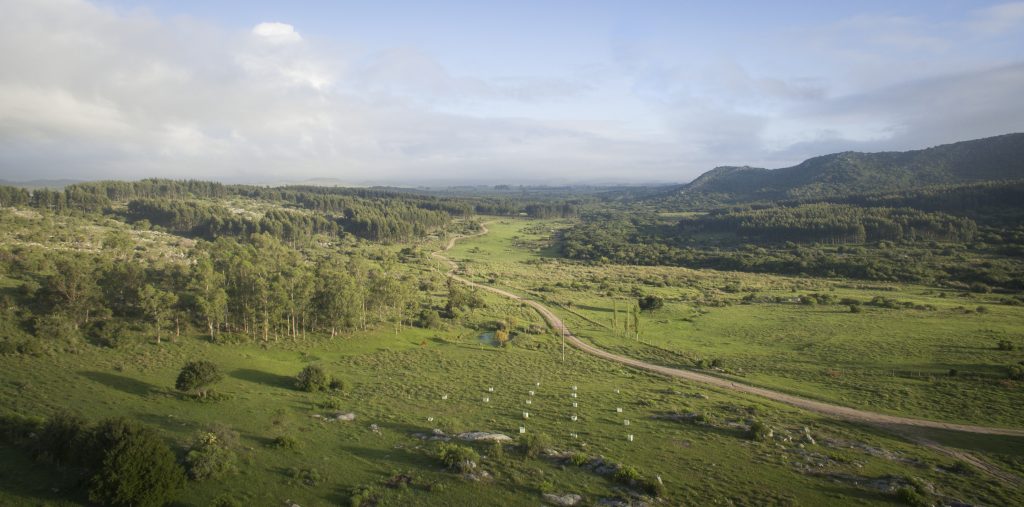
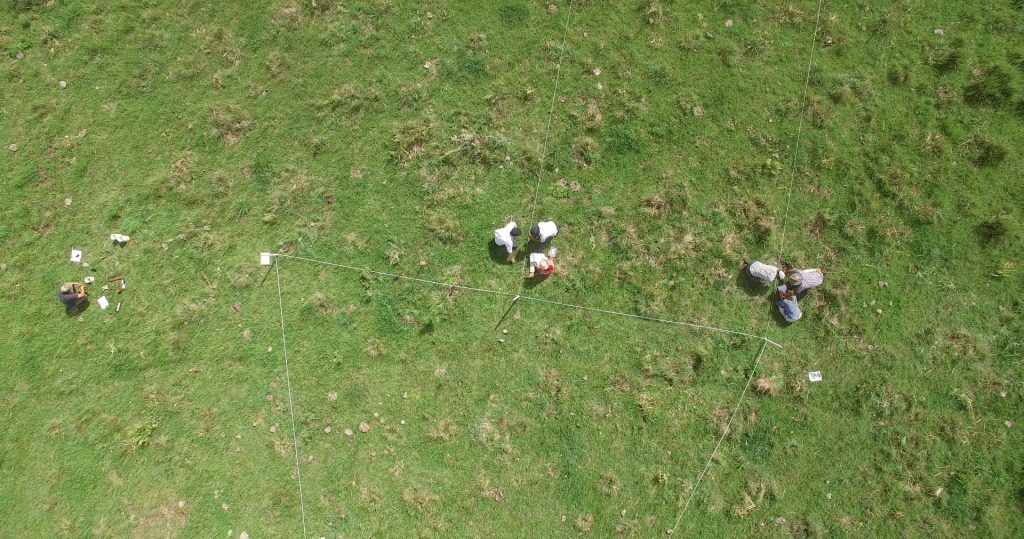
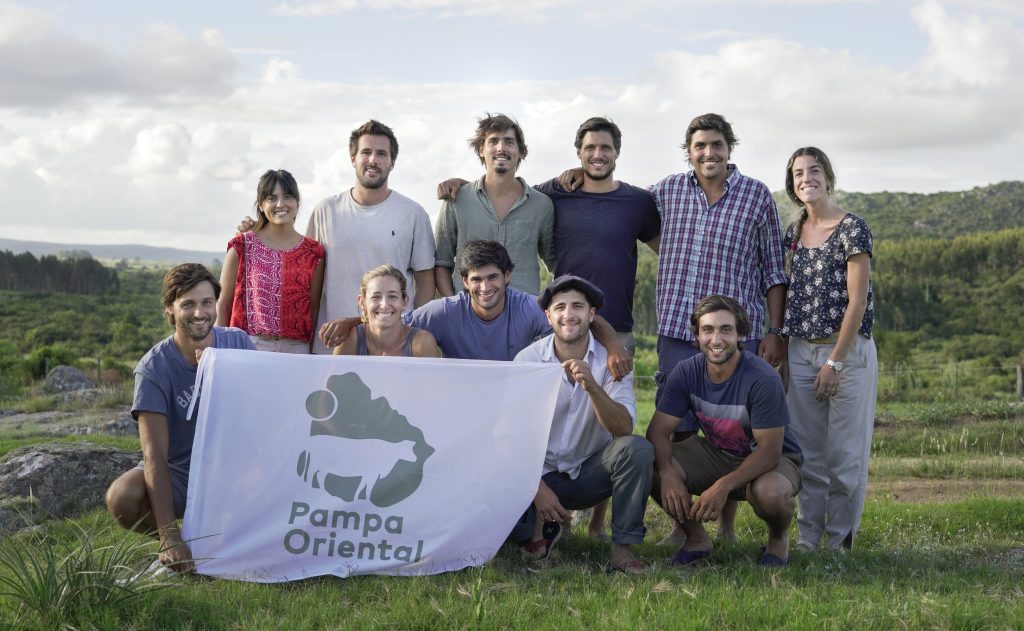
The Uruguay Grasslands Regeneration Project: 1. Overlooking some of the project lands, 2. Conducting ecological measuring, 3. The Pampa Oriental team. March 2021. Source: Savory Foundation
RFSI: Can you tell us more about the social impact and how you are involving local land stewards in this project?
Daniela: Land and livestock stewards are at the heart of this groundbreaking regeneration initiative. More than just participants, they are active co-creators in a project designed to restore landscapes while ensuring long-term benefits for their livelihoods.
Since September 2023, the project team has been holding in-depth informational sessions with all involved producers, offering clarity on the initiative’s structure, scope, benefits, and potential risks. Workers on each participating property were also brought into the conversation, ensuring that they, too, fully understand the project’s vision and implications. But communication doesn’t stop at these introductory meetings. Through group discussions and one-on-one ranch meetings, they have helped shape key aspects of the project—from regeneration activities and benefit-sharing models to monitoring strategies and conflict resolution mechanisms.
A particularly crucial component has been the co-creation of the collaboration agreement, where producers played a central role in refining the terms, ensuring their insights and concerns were fully integrated. This emphasis on partnership has fostered a sense of shared ownership, reinforcing the project’s commitment to meaningful, long-term engagement.
Communication remains an ongoing priority. Land stewards receive continuous updates through ranch visits, social impact monitoring, digital newsletters, and direct support via a dedicated land steward hotline. They are also equipped with the tools and knowledge to implement Holistic Management effectively, through training sessions and capacity-building workshops.
Finally, the project also includes a Social Impact Fund that reinvests in local communities, supports worker benefits, and funds education initiatives.
RFSI: Wow, that’s incredible. A project of this scale must require tremendous collaboration and coordination – who are you partnering with?
Daniela: SF works with Savory Institute, Cultivo Land PBC and Pampa Oriental for project management and local execution support. Cultivo Land PBC® is a science-driven platform that originates projects, structures finance, and mobilizes investment into land regeneration at scale. It plays a crucial role in project design, compliance with registries (Verra’s VCS certification in this case) , and ensuring high social and environmental integrity.
Pampa Oriental®, a Savory Hub, leads implementation, ensuring the effective adoption of Holistic Management, providing training for land stewards, and conducting ecological monitoring through Ecological Outcome Verification (EOV). Their deep local knowledge ensures that regenerative practices are tailored to regional needs and that producer benefits are maximized. Other auxiliary partners are brought into the project as needed to deploy additional social and biodiversity monitoring and reporting, among other activities.
The Opportunity for Investors & Philanthropic Partners
RFSI: Do you plan to replicate this in other regions of the world?
Daniela: Yes. We are already replicating this model in Spain through a partnership with the Carasso Foundation, starting in March 2025. We are also preparing a second cohort of producers in Uruguay that will double our footprint in the country, to begin in 2026. Beyond that, we have a global portfolio of ready-to-launch Savory Hubs’ regions, including Australia, the U.S., and key areas across Latin America—Uruguay, Argentina, Brazil, Chile, and Colombia. In Africa, we are evaluating a project in Zambia and opportunities in South Africa and Kenya where our Hubs are well connected in the communities and well equipped to deliver outcomes.
As blended finance pools seeking real-world deployment opportunities continue to expand, the Savory Foundation’s portfolio approach—structuring investment vehicles that integrate multiple projects into singular investment instances—enhances diversification within nature-based solutions. This strategy not only broadens investment opportunities but also fosters the scalable replication of this emerging model.
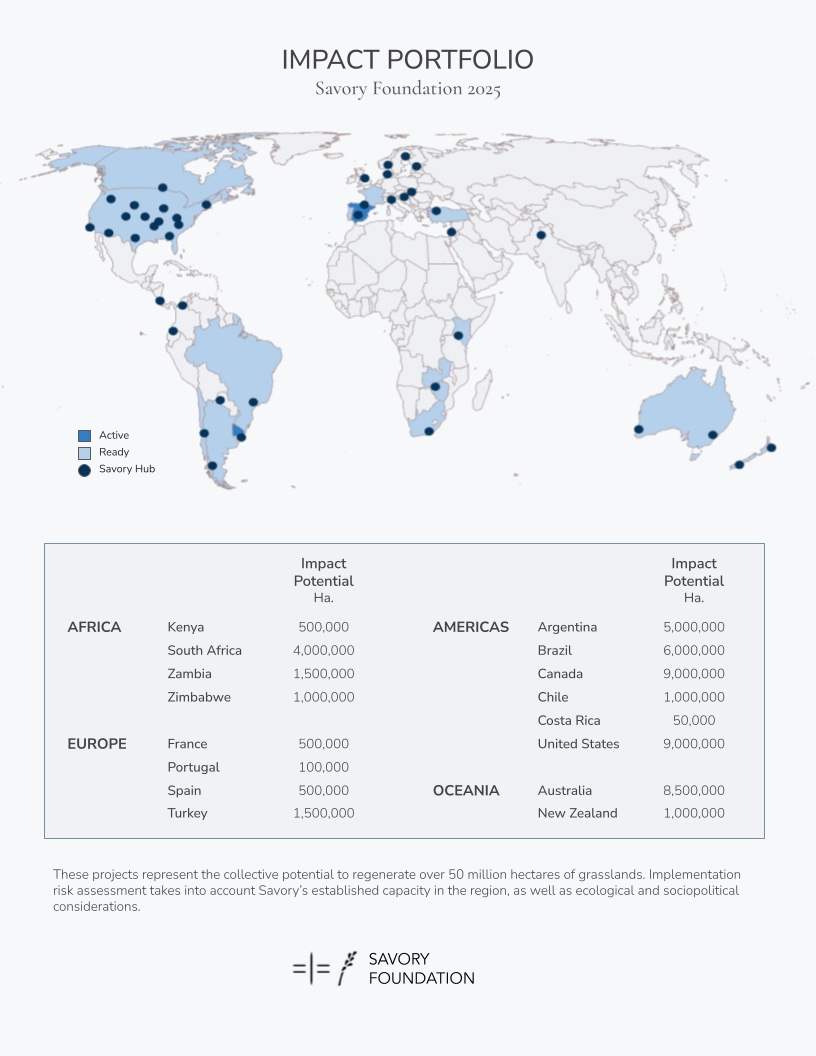
RFSI: How are you structuring future funding models?
Erik: We are actively exploring and developing new financial instruments, including:
- Grasslands Regeneration Fund – A structured investment vehicle integrating multiple projects
- Debt & Credit Facilities – Unlocking long-term capital for regenerative transition
- Blended Finance Approaches – Combining grants, impact investment, and commercial capital
The Savory Foundation is seeking strategic financial partners to collaborate on designing and scaling innovative funding models. By working together, we can create purpose fit, scalable, investable portfolios of regenerative projects that deliver strong returns while restoring the ecological health of grassland landscapes worldwide.
RFSI: Very exciting. How would you frame this opportunity for funders and investors looking for scaled and impactful natural capital investments?
Erik: The Savory Foundation is uniquely positioned to bridge the gap between large-scale institutional capital and real, measurable land restoration at scale. Unlike traditional land investments that focus on large-scale holdings, our approach unlocks access to a vast, often overlooked segment—ranchers and land stewards who collectively manage millions of acres of grasslands but individually are too small to attract investment, aggregating land holdings into coordinated and supported producer networks. This approach creates an investable, scalable portfolio of regenerative land assets—delivering measurable outcomes in biodiversity, climate resilience, and sustainable land management aligning with global sustainability goals.
For investors seeking high-integrity, impact-driven investments, the Savory Foundation offers:
- A proven, scalable model: Backed by a global network of implementation partners
- Strong financial viability: Supported by carbon markets, potential for biodiversity credits, and sustainable agricultural value chains
- Rigorous ecological & social impact tracking: Ensuring transparency and accountability
- A collaborative funding ecosystem: Bringing together grants, institutional capital, and impact investors
Now is the time to mobilize capital at scale to regenerate the world’s most vital landscapes. We invite institutional investors, philanthropic partners, and financial innovators to join us in shaping the next frontier of nature-based solutions. Together, we can turn regenerative agriculture into an investable, scalable movement that transforms economies and ecosystems for generations to come.
For more information, reach out to Daniela Ibarra-Howell or Erik Bruun Bindslev.
